“The Government of the United Kingdom (UK) has requested a possible sale of up to two thousand seven hundred forty-seven (2,747) Joint Light Tactical Vehicles (JLTV). This possible sale also includes baseline integration kits, basic issue item kits, B-kit armor, engine arctic kits, fording kits, run-flat kits, spare tire kits, silent watch kits, power expansion kits cargo cover kits, maintainer and operator training, U.S. government technical assistance and logistics support services, and other related elements of logistics and program support. Total estimated cost is $1.035 billion.This proposed sale supports the foreign policy and national security policies of the United States by helping to improve the security of a NATO ally which has been, and continues to be, an important partner on critical foreign policy and defence issues.”
The agency say that proposed sale will help improve the UK’s Light Tactical Vehicle Fleet and enhance its ability to meet current and future threats.



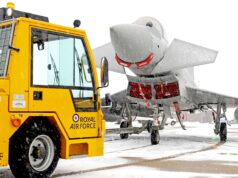


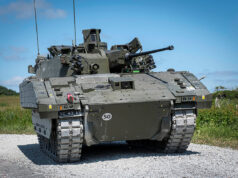
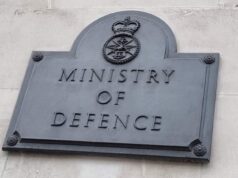
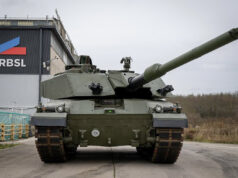
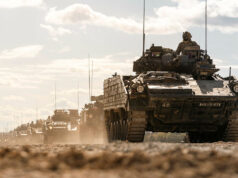
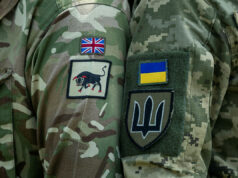
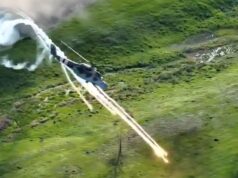


This a good decision. A light mrap vehicle using proven cots parts, far better and affordable than any alternative platform.
We are getting these badly needed vehicles at a discount price, production run will probably 50000 vehicles, making maintenance and support costs low.
Of course we would all like a UK sourced solution, but the cost would be prohibitive and the funds are not there.
For the price of one foxhound vehicle you can buy four jltv.
For once the UK military is getting the right equipment at the right price.
Do they actually replace kit or are they yet another different fleet of vehicles to maintain? Genuine question, not being cynical
My understanding they will replace vehicles used “outside of the wire” in hostile situations.
Replacing anything from bulldogs to land rovers.
Oh right, thanks. some of those are well past their use by dates
Good deal,
At 500k each vehicle I think this is good value for money, especially with all the spares etc.
I would like to see us also purchase a massive fleet of Polaris vehicles from the US and build those over here under licence – these could change our light infantry capability, allowing them to move quickly with a GPMG on top for suppressive fire and then ditch them when necessary and continue on foot – at $10k each these will take 4 soldiers and really change the way our Para’s and light infantry operate.
Just a thought – but in my view (as an ex infantryman) this is the way to go. Something cheap, expendable and a force multiplier.
Overall Great news – happy with this decision – just a pity it cant be a British solution, but there you go.
I’ve been looking at Polaris defence as well and am impressed by their stuff.
The “Dagor” can seat up to 9 men or 4 with pretty good storage.
They cost below £200k
Their baby ATV’s are intended for logistical support though rather than transport.
Augmenting the mk1 foot to carry supplies.
Though, in a pinch the MRZR-4 can carry 6 men.
As far as I can find the military versions cost closer to £40k.
I think the Polaris has a place in the UK armed forces and even at £40k I think it is cracking value.
The main reason I think it is useful is that there is a place for something light and fast that can have a GPMG and a load of ammo for fire support and can move a fire team around at speed.
This for me is a new infantry model which is high mobility and little/no force protection. It is simply a means of moving infantry around more quickly and ultimately somewhere to hide behind and use a GPMG to provide suppressing fire and carry ammo and stores.
Not looking for it to be more than that in combat.
Day to day – it would make an ideal vehicle for ranges and base travel as a lot of journeys involve 1-2 people and do not need a land rover etc. Saving cost
Lastly can you imagine the Paras parachuting in with these things or a chinook landing with 4 inside (guess).
I could see a role for these in between a load of tanks darting in and out and moving alongside as well as warriors.
It’s a concept, but one I dont think is barking mad
According to various sources the base jltv vehicle costs around US$300k then add US$60k for the b kit armour, so the balance is the support costs.
Foxhound costs around £1m (Us$1.3m) plus support costs.
The jltv with the b kit offers similar protection is more powerful and heavier. Life time costs should be significantly lower.
There must be something special about the Foxhound we can’t see that justifies its £1m price.
Perhaps its components are made of gold or platinum of something!
Extensive R&D costs, limited production run, no export orders and use of advanced composite armour which I believe includes titanium which was very expensive to procure.
The reason for this type of armour protection was to reduce the weight of foxhound.
The end result a very expensive vehicle that is unaffordable in the quantities required.
I did read a couple years ago that they were thinking of producing a low cost foxhound without the advanced armoured and using steel but this obviously came to nothing.
I think foxhound did bid for this contract with a lower cost option but was dropped in the down select. Its a pity the design was well thought out but it seemed to suffer from poor reliability. I do think he cost would have been much lower though since most of the R&D has been paid for.
https://oshkoshdefense.com/wp-content/uploads/2017/05/JLTV_8pgBrch_SinglePgs_web.pdf
Details on the Oshkosh
Or you could have had the Hawkei from Australia. ADF is ordering 1,100, now in production.
https://www.anao.gov.au/work/performance-audit/hawkei-army-light-protected-vehicle
Greater than STANAG 4569, Level 1. Additional Applique armour provided by Plasan composite and V-shaped monocoque hull.
Fair swap for a T26.
Hawkei costs considerably more than jltv.
Aussies spent A$1.3bn on 1100 vehicles plus 1000 trailers.
Assuming trailers are relatively cheap, that would mean around A$1m or US$760k per hawkei.
Jltv with b kit armour and support comes in at US$370k.
Some of the Hawkei program cost is design and testing for a relatively small production run.
The US development costs are amortized over a 16,000 + vehicle production run so their unit costs are always going to be lower.
Leaving aside any questions about relative design merits and build quality, Australia is about to inject $1.3 billion into our own economy, while the UK is happy to export £880 million to the US.
My understanding is that the jltv production run will be at least 50000 probably exceed 100000 when you add in exports.
The defence procurement budget is giving our troops the best possible equipment that we can afford in the quantities required, what it is not is a mechanism to sustain a moribund sector of the UK economy. If UK industry can deliver an alternative platform at a reasonable cost then great, but we know it cannot.
Our troops have to fight and win wars, giving them the right equipment that is the priority.
Agree getting the right gear for our troops is the priority – regardless of country of origin.
Each nation needs to make its own decisions as they see fit and Australia has certainly taken advantage of US FMS sales of MOTS gear. The arrival of the last of the RAAFs 12 EA18 Growlers just this week is a case in point.
There is also some trade in the other direction to the US with Australia successfully exporting the Nulka shipborne decoy system and making components for the F35 – current contracts running to $800 million and will run into billions over the full production run.
But much is made of the Commonwealth connection by bloggers on this site, for example arguing the case for the T26 to be the basis of a Commonwealth program for the UK, Australia, Canada and New Zealand.
It should be a two-way street. The same case could be made for other equipment including Hawkei. Can’t help thinking that, Thales being a European headquartered company, would have been happy to have set up (pre-Brexit) a UK production line that, unit cost notwithstanding, would have kept hard currency in UK workers pockets. Missed opportunity perhaps?
The Australian PM is currently in the UK post the G20 talking with PM May about a UK-Aus free trade deal. I’ll bet you a slab of XXXX that we have a UK-Aus agreement in place before a UK-US deal is inked.
https://www.thalesgroup.com/en/worldwide/defence/what-we-do-land-forces-vehicles-platforms/hawkei
https://en.wikipedia.org/wiki/Hawkei
Details on the Hawkei FYI – interesting comparison since JLTV was a a contender for ADF requirement but lost out to local Aussie product.
I see the UK spending many billions on US equipment but not much going in the other direction. Why aren’t the US buying Brimstone?
According to UK government statistics 16% of UK defence exports and 20% of UK security exports go to the USA. UK exports to Europe are 10% and 8%.
Given that the UK builds 15% of every F35 exports to the USA will rise in the future as the 3000 plus F35 are built.
A.Smith please note that UK is building 15% of F-35, so that’s a lot going in the other direction.
For several reasons, one of which is the US’s Joint Air to Ground Missile program. Second, the US has tens of thousands of hellfires in its inventory. Third. Funding constraints. Fourth. Brimstone is an over-hyped missile that has a very useful, but limited utility. Just because the UK press, in their usual hyper-ventilating fashion overhype a UK product doesn’t mean that the product is worthy of the hype. And lastly, Brimstone costs a lot and is not considered cost effective considering the other tools the US has in its kit.
From a report from HoC public accounts committee dated November 2011.
“The Department (ministry of defence) has failed to deliver any vehicles from its core programmes despite spending £1.1 billion since 1998.”
That’s correct £1.1bn spent on armoured vehicles and not a single new armoured vehicle was delivered to our armed forces.
The MOD ” has cut £10.8 billion from its armoured vehicles programme in an attempt to balance its overall equipment budget. Armoured vehicles have suffered more severe cuts than any other equipment area because lower levels of contractual commitment have made it an easy target.”
Historical errors in defence procurement cast a very long shadow.
Indeed they do cast a long shadow. This is most acute in RN.
I think EJDER YALCIN III is a bettter choice.
I think the foxhound and husky are great vehicles and perhaps we should have looked at an option for the LM facility in wales to build a range of vehicles. Having said that and as stated, the MOD has wasted billions on FRES and other land systems and latest reports are the warrior upgrade isn’t going well. So COTS order for a great product seems like a sound deicision.
I think this is great news – really do – but when will we get them as the US are looking at getting theirs starting 2018 and I guess we are joining a queue.
[…] by /u/mrtrotskygrad [link] […]
Whatever happened to British made yes a great improvement on the 110 pinkies when I served some even dating back to first Iraq war when I was sent there then and we still using them in Afganistan one I swear we had used all them years ago was one of our old kit and yes 18-year-old kit in same cases but after IEDs and amount of losses we sustained at least our serving troops are at last getting more decent kit and that is however long it takes MOD get the order through and delivered oh yes them wonderful MOD bean counter pen pushers can take their time
British made??! They would cost BILLIONS. Off the shelf should be used in tandem with home made because UK industry cannot make affordable kit any more. BAES continued screwing of the UK taxpayer is a typical example.
This vehicle when fitted with the add out armour kit will not fit inside a Chinook. Its payload is inadequate, and it is just basically a road bound internal security vehicle. The cost will exceed one billion US as the order does not include a spare parts component and the vehicles will have to be modified to left hand drive, so they be produced in one production block at the end of the US order.
It is doubtful whether it would replace the Panther which are to be retained in service until 2037, and of course the US vehicle will require to be modified to fit UK communications equipment. In the media it is stated that it will also replace the Jackal, which is a patently silly idea.
Some commentators have made comment re the Australian Hawkei, which vehicle is not as effective as the UK Panther, a recent discussion with two experienced RAAC WOs with experience with both vehicles state that it is a inferior vehicle which is difficult to maintain.
Also it is not producing great benefits for the Australian economy as the vast majority of the vehicles components are sourced overseas by Australian ‘middlemen’ companies.
The greatest concern in my mind is that there is no trials of the vehicle by Army personnel, equally the purchase of yet another off the shelf vehicle with no clear operational concept for its use is after the debacle with such in AFGHAN. It is definitely not a vehicle suitable for combat against a viable enemy, or even in aid to the civil power on the streets of the UK.
Having been involved in the testing and development of the Australian Bushmaster, a vehicle originally intended for a extremely flawed concept, and now having been bought in very large numbers far in excess of the Army’s requirement which sees several hundred sitting in the open in various privately run logistic facilities. And it by no stretch a tactical vehicle capable of combat in a war zone. And its only sales made with the means of overseas development money (to Fiji for the UN, Jamaica for IS) as a trainer (Japan as it the only left hand drive MRCAP vehicle available off the shelf for homeland training), Holland for urban operations and the UK as a SF communications vehicle. Cost the Australian taxpayer a lot of money, for very little realistic return. But they do make great Anti-Armour targets on the range at Puckapunyal.
Methinks thou dost protest too much.
Opinion of the Panther from informed source in a January 2015 article on the Think Defence website:
“Given the general unsuitability of the Panther Command and Liaison Vehicle for operations in Iraq a number of Bulldogs were fitted with Remote Weapon Stations from the Panther programme in 2006.
BAe were awarded a £28 million contract in 2007 for support services on the Panther vehicle, to provide better availability and lower costs. The Panther is reported to be a maintenance intensive vehicle with very poor availability.
Panther was not planned to go to Afghanistan but the embarrassment would have been too great so after an extensive TES package costing £20 million for 67 vehicles it was deployed to Afghanistan in 2009. This package included an additional roof hatch, ECM equipment, rear view camera a new engine intake and additional armour.
On face value it looks like Panther was selected in a controversial process, has sub optimal reliability, protection and mobility, fulfills its core role with issues, is far too small inside and cost a fortune.”
Full article here: http://www.thinkdefence.co.uk/2015/01/panther-command-liaison-vehicle/
Given the Bushmaster has been deployed operationally by the ADF in both Afghanistan and Iraq your comment “and it by no stretch a tactical vehicle capable of combat in a war zone” is uninformed. The Bushmaster has proven survivable when hit by IEDs and has saved lives on the battlefield. Certainly it offers better protection than any Snatch Land Rover.
The Bushmaster is a Class II MRAP and like all mine resistant vehicles is designed for asymmetric warfare rather than high-end mechanised warfare. It is comparable in concept, capabilty and levels of protection to the US Cougar MRAP family on which the UK Mastiff, Ridgeback and Wolfhounds are based.
Bushmaster’s ballistic protection exceeds STANAG 4569 level 1 (standard) up to STANAG 4569 level 3 (optional) and IED/mine protection exceeds STANAG 4569 level 3 in standard configuration due to its V-shaped monocoque hull.
This, as you would have it, “extremely flawed concept”, is based on the proven design of South African armoured vehicles dating back to the 1970s. Development of the Bushmaster began in 1997, while the US (and UK derived variants) were late to adopt this feature with “The very first sketches of the new vehicle were made in late March 2004 in response to those initial USMC inquiries.” (Wikipedia)
As for the Hawkei it also employs a V-shaped monocoque hull (I’m not aware if the Panther does the same) but the Hawkei’s mine resistance would be on a par or superior to the Panther.
Having been involved in Australia in the actual development of the Bushranger and the periphery of the Hawkei, and enthusiastically looked at various vehicles of a similar design in South Africa, Iraq and AFGHAN, I wrote a comment on it.
It obviously was not suitable to the moderator of the readers comments as it was not published, Why I wonder.
One of the richest nations in the world, one of the biggest economies, and a G8 member of worlds richest industrial nations. The UK can afford whatever it wants when we give billions to the EU and tens of billions in oversees aid on a plate.
Now go back into your hole.